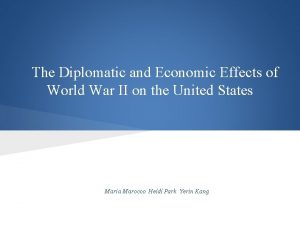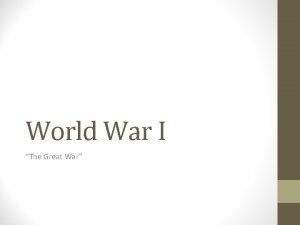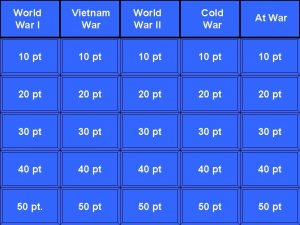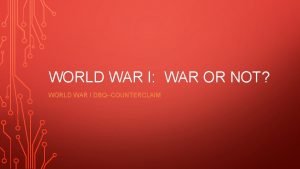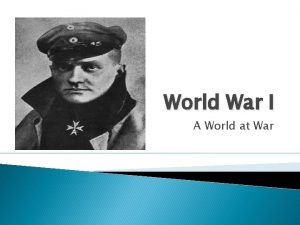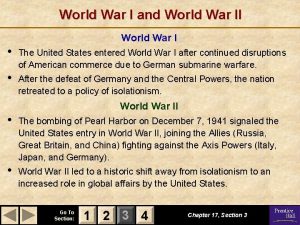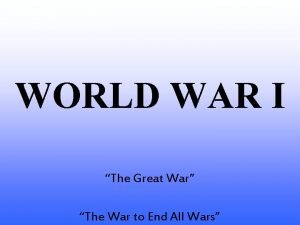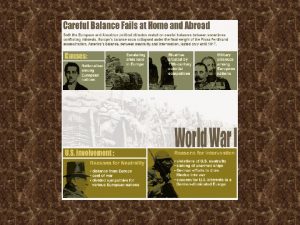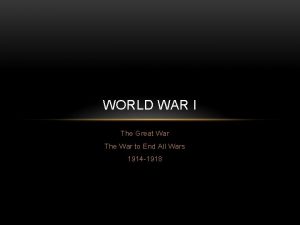Effects of World War II Effects of World














- Slides: 14

Effects of World War II

Effects of World War II • The majority of male PE teachers were enlisted and many were engaged in training military personnel. • Large numbers of soldiers were taken prisoner and it was realised that recreative activity helped to maintain morale in the prisoner-of-war camps. • The bombing itself, with the inevitable tragic loss of life, at least levelled many of the 19 th-century slums and resulted in a massive rebuilding programme.

The 1944 Education Act • The 1944 Education Act was a progressive piece of legislation, which ensured every child a free education. • The theory behind the inter-war syllabuses had educative intentions, but the 'practical' was predominantly physical training. • There were probably four major areas of influence from within the subject.

Phase 1 • 1. F. J. C. Marshall and E. Major lectured at Carnegie College, Leeds, before the war, publishing several books. • Though they continued to accept the 'tables' approach, they were part of a move to increase the importance of skill learning and the use of small apparatus.

Phase 1 • They were in the services during the war, but wrote a number of progressive articles for the Journal of PE suggesting changes towards contests, self-testing and initiative programmes. • Perhaps the most important transitional phrase used was the suggestion that 'the child was more important than the system'.

Phase 2 • Leading female physical educationists were also going into print. • An article by Veronica Tyndale-Biscoe (1945) described the modern dance extension of Rudolf Laban's work, using phrases like 'the body as a medium of expression'.

Phase 2 • Similarly, Ruth dark (1946) wrote about Austrian gymnastics, referring to movement in an educational medium and suggesting that 'working on apparatus at his own pace has particular value to the timid child, who gains courage through the discovery for himself of his own capabilities'.

New Apparatus • New apparatus: C. E. Cooke, an organizer in Bristol, visited the Northern Command Physical Training School and saw commandos using scrambling nets and assault course equipment.

New Apparatus • She felt that young children would 'enjoy the skill and adventure provided by this apparatus' and published her adaptations. • With the flush of post-war building, many local authorities introduced their own versions of frame and tubular apparatus in their primary schools and even old schools were given 'apparatus stations. '

The Halifax Experiment • Miss Dudgeon was working in a children's rehabilitation clinic during the war. • The cornerstone of physical training had always been that all children should respond to a set task.

The Halifax Experiment • At Halifax the individual disabilities of handicapped children led Miss Dudgeon to encourage individual interpretation of open tasks, where children were left to decide rhythm and timing and work at their own level.

The Halifax Experiment • After the war, this novel approach attracted most of the progressive physical educationists in the country; they noticed that the levels of child involvement, enjoyment and personal skill achievement were unequalled elsewhere in the country.

Moving and Growing • The outcome of these progressive developments was the publication of Moving and Growing and Planning the Programme.

Moving and Growing • These 'revolutionary' books replaced the formal training syllabuses by introducing a child-centred approach to primary physical education. Both these publications are still to be found in bookshops. • A small sample of the activities is shown in Figure and it would be an excellent role-play experience to use these or others from Planning the Programme to show free and individualised physical education had become, compared with the initial Model Course.
 Wwii effects
Wwii effects Ww2 causes
Ww2 causes What challenges did madison face abroad
What challenges did madison face abroad Vietnam war
Vietnam war Lesson 1 the cold war begins
Lesson 1 the cold war begins Reconstruction plans venn diagram
Reconstruction plans venn diagram Josette dugas
Josette dugas Sein remsen
Sein remsen Force and motion study jams
Force and motion study jams Civil war first modern war
Civil war first modern war Ich war du warst er sie es war
Ich war du warst er sie es war Toward civil war lesson 3 secession and war
Toward civil war lesson 3 secession and war Cold war proxy wars
Cold war proxy wars Chapter 30 the war to end war
Chapter 30 the war to end war Chapter 30 the war to end war
Chapter 30 the war to end war
